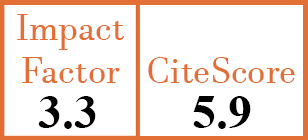Review
Research progress of NLRP3 in immune cells of systemic lupus erythematosus
Y. Liu1, Y. Wang2, X. Wang3, Y. Liu4, Y. Wang5
- Department of Rheumatology and Immunology, Shandong Province Rheumatic Disease Key Speciality, Affiliated Hospital of Shandong Second Medical University, Weifang; and Key Laboratory of Rheumatology and Immunology, Weifang, China.
- School of Public Health, Shandong Second Medical University, Weifang, China.
- Department of Rheumatology and Immunology, Shandong Province Rheumatic Disease Key Speciality, Affiliated Hospital of Shandong Second Medical University, Weifang; and Key Laboratory of Rheumatology and Immunology, Weifang, China.
- Department of Rheumatology and Immunology, Shandong Province Rheumatic Disease Key Speciality, Affiliated Hospital of Shandong Second Medical University, Weifang; and Key Laboratory of Rheumatology and Immunology, Weifang, China. liuyjdoctor@sdsmu.edu.cn
- Department of Rheumatology and Immunology, Shandong Province Rheumatic Disease Key Speciality, Affiliated Hospital of Shandong Second Medical University, Weifang; and Key Laboratory of Rheumatology and Immunology, Weifang, China. yingliang81@126.com
CER18776
Review
PMID: 40892671 [PubMed]
Received: 31/03/2025
Accepted : 04/08/2025
In Press: 25/08/2025
Abstract
Systemic lupus erythematosus (SLE) represents a multifaceted autoimmune disorder characterised by widespread organ involvement and abnormal autoantibody production. Its underlying mechanisms are closely related to immune system dysfunction. Recent advancements in immunological research have highlighted the pivotal role of the NLRP3 inflammasome, which acts as a key regulator of both innate and adaptive immunity. This molecular complex has attracted significant attention in SLE studies because it can drive pathological inflammation by modulating key pro-inflammatory cytokines, including IL-1β and IL-18, thereby establishing itself as a critical focus in the investigation of SLE pathogenesis. In this review, we conducted a systematic examination of the structural and functional features of NLRP3 inflammatory vesicles, focused on the mechanism of their interaction with different immune cell populations during the development of SLE, and found that their dysfunctions in different immune cells jointly contributed to the pathological process of SLE. Moreover, potential therapeutic strategies aimed at targeting NLRP3 inflammatory vesicles are discussed to introduce novel concepts to the research and treatment of SLE.


